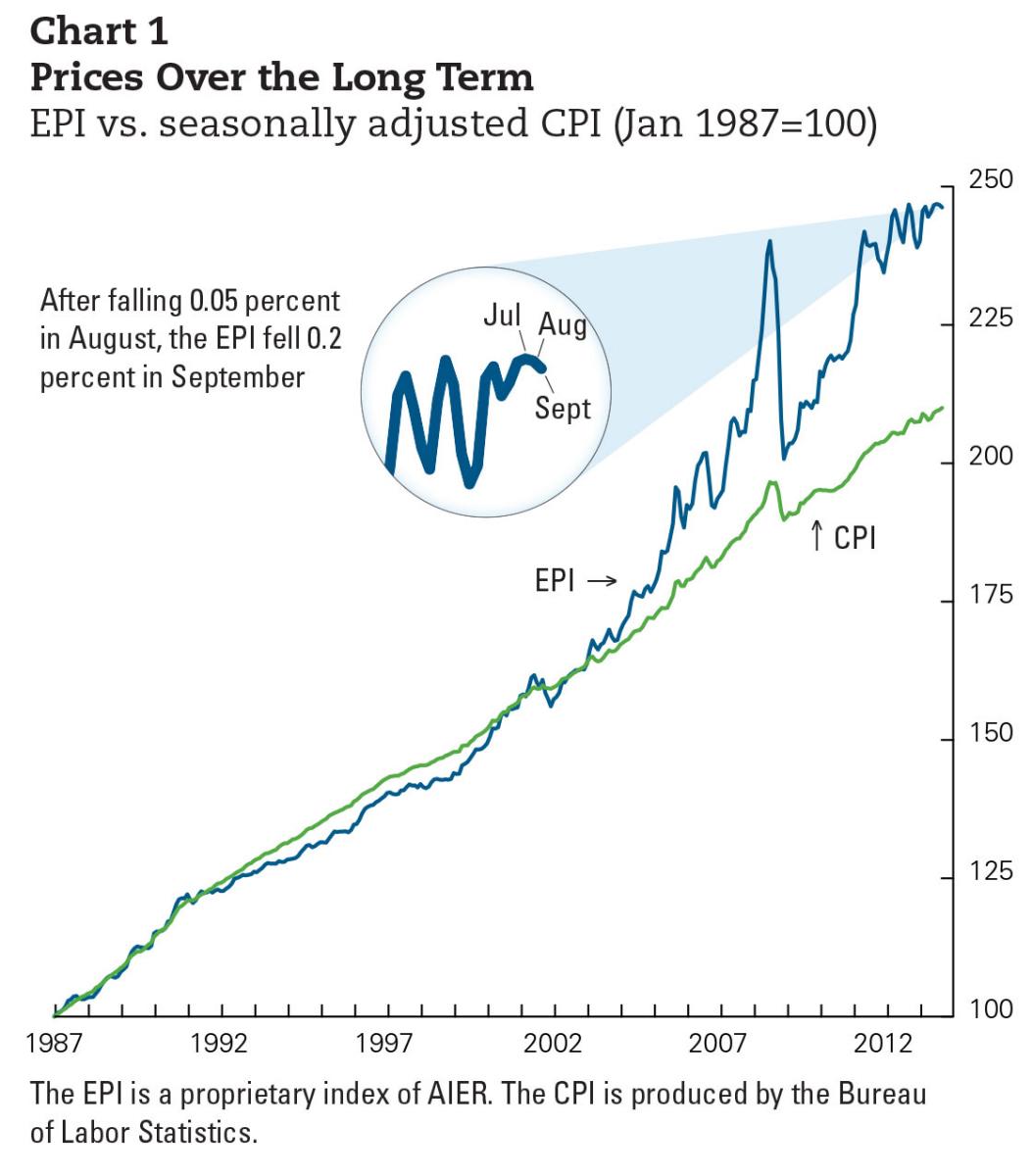Lower Fuel Costs Pull Everyday Prices Down
The fall in the EPI was primarily a result of falling fuel costs and flat food costs. The costs of motor fuel, which constitutes over 13 percent of people’s everyday expenditures, fell 1.2 percent in September. Food and beverage prices, which account for almost 38 percent of everyday budgets, were essentially flat. If fuel prices and food pricesresume their upward trend, the everyday prices are sure to follow.
This different trend for the CPI and the EPI in September result from the fact that prices of many of the products not included in the EPI increased. The biggest increase was in apparel prices, which rose 3.1 percent in September alone. Housing costs, both for rental and owner-occupied housing, rose 0.2 percent and education costs (tuition and school fees) rose 0.7 percent. Increases in these prices offset the fall in fuel costs in September, pushing up the overall CPI. But since these categories of consumer expenditures are not included in the EPI, the fall in the EPI was not offset.
About the EPI
AIER’s Everyday Price Index (EPI) measures the changing prices of frequently purchased items like food and utilities. We do this by selecting the prices of goods and services from the thousands collected monthly by the Bureau of Labor Statistics in computing its Consumer Price Index. The EPI basket contains only prices of goods and services that Americans typically buy at least once a month, excluding contractually fixed purchases such as mortgages. Our staff economists weight each EPI category in proportion to its share of Americans’ average monthly expenditures. In order to better reflect the out-of-pocket prices that consumers experience on a daily basis, the EPI does not seasonally adjust prices.






